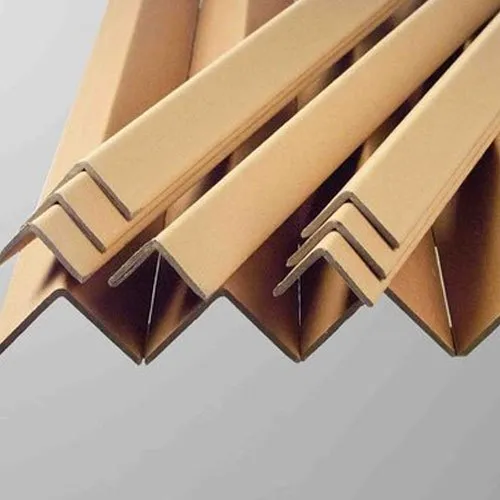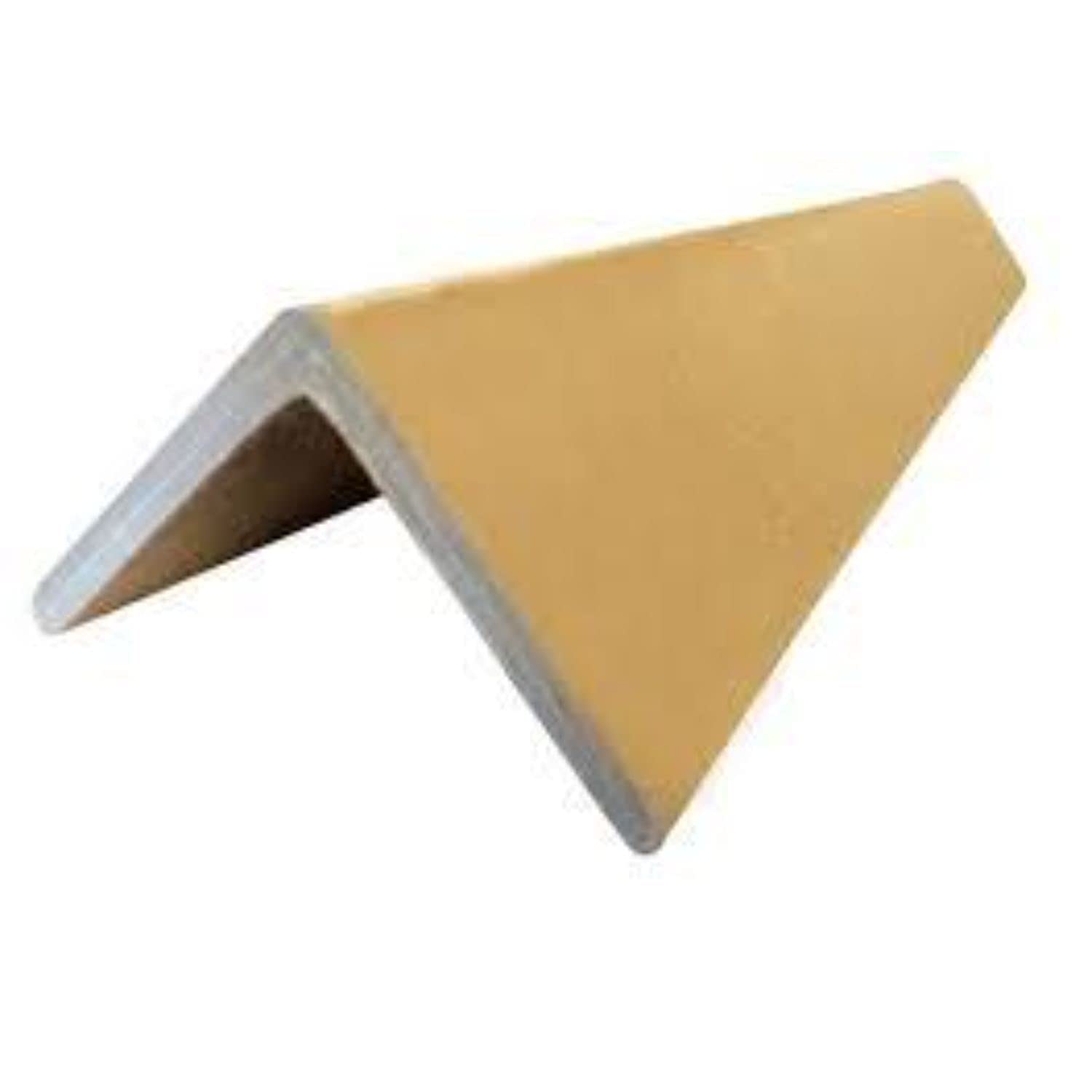What is Angle Board?
“Angle board, also known as edge protector, corner guard, or corner board, is a packaging material used to protect the edges and corners of products during transport and storage. It is typically made of paperboard or plastic and is shaped like a right angle. Angle board is designed to provide additional strength and support to the edges of boxes, pallets, and other packaging materials. It helps to prevent damage to the corners and edges of products caused by compression, impact, or vibration during shipping and handling. By adding stability to the packaging, angle board can also prevent products from shifting or moving around inside the container, reducing the risk of damage. Angle board can be used for a variety of products, including furniture, appliances, electronics, glass, ceramics, and more. It is available in various sizes, thicknesses, and materials to meet the specific needs of different applications. Angle board can also be customized with printing, labeling, and branding to enhance the packaging and marketing of products.”
History of Angle Board in Brief Below:
The history of angle board can be traced back to the early 20th century when the use of wooden corner protectors became popular in the packaging industry. These wooden corner protectors were used to reinforce the edges of wooden crates and boxes used for shipping.
The history of angle board can be traced back to the early 20th century when the use of wooden corner protectors became popular in the packaging industry. These wooden corner protectors were used to reinforce the edges of wooden crates and boxes used for shipping.
In the 1950s, the demand for more efficient and cost-effective packaging solutions led to the development of paper-based angle board. The first paper angle board was developed by a company called the Angleboard Corporation, which was founded in the United States in 1951. The company initially produced angle board made from laminated paperboard, which was lightweight, strong, and cost-effective.
Over time, the use of plastic materials in packaging increased, and plastic angle board became a popular alternative to paperboard. Plastic angle board is durable, moisture-resistant, and recyclable, making it a versatile and sustainable packaging material.
Today, angle board is widely used in the packaging industry and has become an essential component of many packaging applications. The technology and materials used to produce angle board have evolved significantly over the years, and angle board continues to be a reliable and effective solution for protecting products during shipping and storage.
Making of Angle Board in Brief Below:
Angle board can be made from different materials, including paperboard and plastic. The manufacturing process for angle board typically involves the following steps:
Material preparation: The raw materials are prepared based on the specifications of the angle board. For paper-based angle board, the paperboard is first cut into the appropriate size and thickness. For plastic angle board, the plastic resin is melted and extruded into the desired shape.
Lamination :If the angle board is made from paperboard, the paper layers are laminated together to create a thicker and more durable material.
Cutting: The laminated paperboard or extruded plastic is then cut into the desired lengths and angles to form the angle board.
Notching: The angle board is then notched at regular intervals to allow it to bend around the corners of the product.
Slotting : For some applications, the angle board may be slotted to allow it to be easily folded around the edges of the product.
Printing and labeling :The angle board can be printed with custom designs, branding, or labeling to enhance the packaging and marketing of the product.
Angle Board Benefits
Angle board provides several benefits for packaging and shipping products, including:
Protection – Angle board helps to protect the corners and edges of products from damage during transport and storage. By adding strength and support to the packaging, angle board can prevent compression, impact, and vibration from causing damage to the product.
Stability – Angle board can prevent products from shifting or moving around inside the container, reducing the risk of damage caused by shifting loads.
Versatility – Angle board can be used for a wide variety of products, including furniture, appliances, electronics, glass, ceramics, and more. It is available in various sizes, thicknesses, and materials to meet the specific needs of different applications.
Cost-effective – Angle board is a cost-effective solution for protecting products during shipping and storage. It is made from lightweight materials and can be easily customized to fit the specific needs of different applications.
Sustainability – Angle board made from recyclable materials such as paperboard and plastic can be recycled and reused, making it a sustainable packaging option. It can also help to reduce the amount of packaging material needed for a shipment, which can lower the overall environmental impact.


Specifications:
| Size : | Angle board is typically available in a range of sizes, with the length of the legs and thickness of the material varying based on the application. For example, angle board for furniture may have longer legs and a thicker material than angle board for smaller products. |
| Material : | Angle board can be made from a variety of materials, including paperboard, plastic, and metal. The choice of material will depend on the specific needs of the application, with each material offering different levels of strength and durability. |
| Thickness: | The thickness of angle board can vary from 1mm to 12mm, with thicker materials providing greater strength and protection. |
| Color : | Angle board can be manufactured in various colors, including brown, white, and black. Some manufacturers may offer custom colors or branding for larger orders. |
| Notching : | Angle board may be notched at regular intervals to allow it to bend around the corners of the product. The spacing of the notches may vary depending on the length of the legs and the thickness of the material. |
| Load-bearing capacity: | The load-bearing capacity of angle board will depend on the material, thickness, and size of the board. Manufacturers may provide load-bearing capacity specifications based on different applications and product weights. |